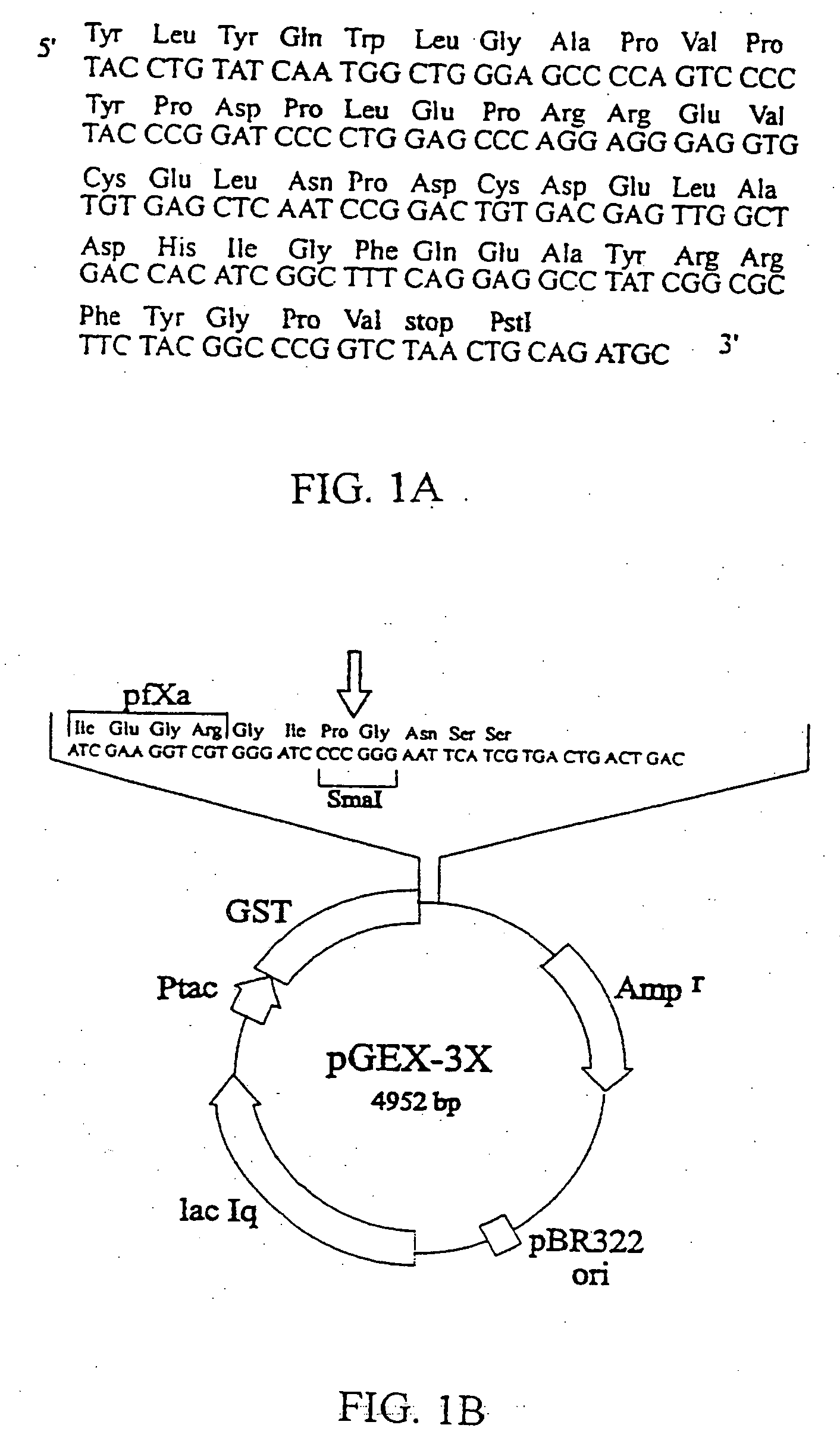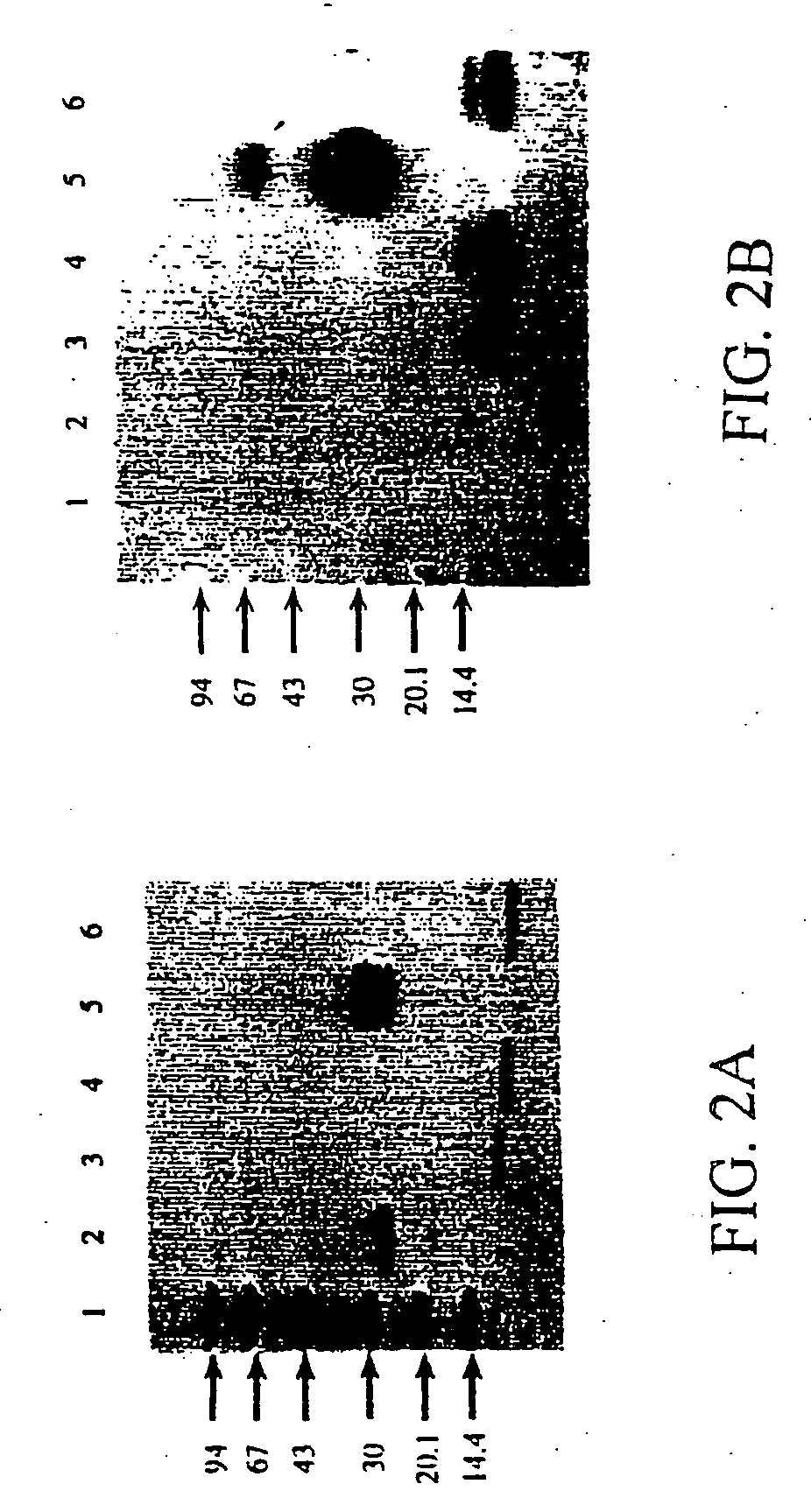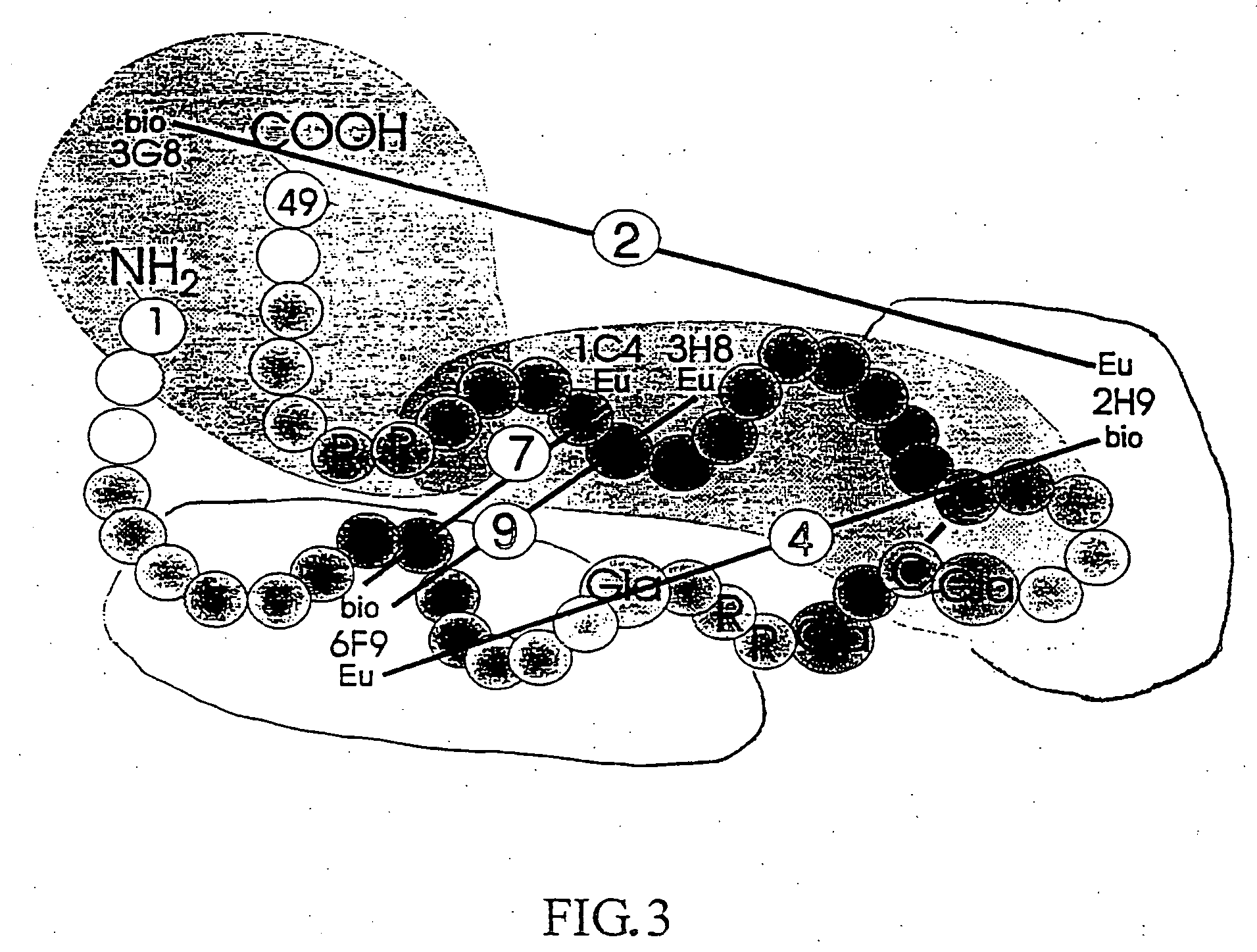Isolated osteocalcin fragments
a technology of osteocalcin and fragments, which is applied in the field of isolated osteocalcin fragments, can solve the problems of not having a calibration standard, unable to directly compare the hoc level measured in different laboratories, and unable to be widely used in clinical applications
- Summary
- Abstract
- Description
- Claims
- Application Information
AI Technical Summary
Problems solved by technology
Method used
Image
Examples
Embodiment Construction
[0038] 1. Production of the Recombinant Osteocalcin Fusion Protein
[0039] Materials
[0040] Molecular biology reagents and enzymes were obtained from Pharmacia Biotech, Uppsala, Sweden or from New England Biolabs. Expression vector pGEX-3X was obtained from Pharmacia Uppsala, Sweden. Escherichia coli XL1-Blue strain (recA1, endA1, gyrA96, thi1, hsdR17, supE44, relA1, lac, F' proAB, lacI.sup.qZDM15, Tn10 (tet.sup.r)) was used for the expression of the GST-rhOC fusion protein. L-broth culture medium contained 10 g / l Bacto.RTM. Tryptone (Difco laboratories, Michigan, USA), 5 g / l Bacto.RTM. Yeast extract (Difco) and 5 g / l NaCl, pH 7.4. Isopropyl-1-thio-.beta.-D-g-alactoside, IPTG (Sigma Chemical CO, USA) was used for induction. PBS buffer consisted of 150 mM NaCl, 16 mM Na.sub.2HPO.sub.4, 4 mM NaH.sub.2PO.sub.4, pH 7.3. PMSF and reduced glutathione were obtained from Sigma and protease factor Xa, pfXa from New England Biolabs. Glutathione Sepharose.RTM. 4B column (bed volume 8 ml) was obta...
PUM
 Login to View More
Login to View More Abstract
Description
Claims
Application Information
 Login to View More
Login to View More - R&D
- Intellectual Property
- Life Sciences
- Materials
- Tech Scout
- Unparalleled Data Quality
- Higher Quality Content
- 60% Fewer Hallucinations
Browse by: Latest US Patents, China's latest patents, Technical Efficacy Thesaurus, Application Domain, Technology Topic, Popular Technical Reports.
© 2025 PatSnap. All rights reserved.Legal|Privacy policy|Modern Slavery Act Transparency Statement|Sitemap|About US| Contact US: help@patsnap.com



